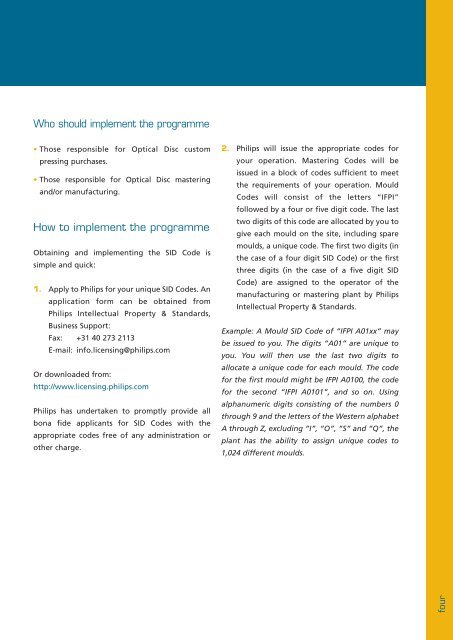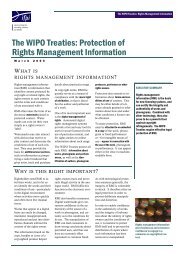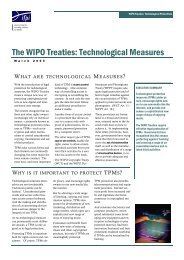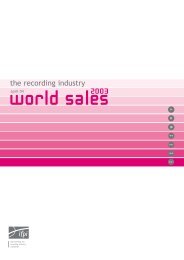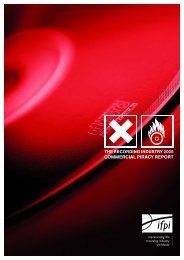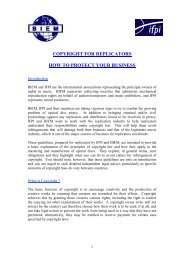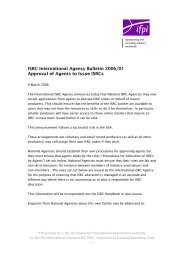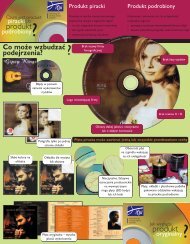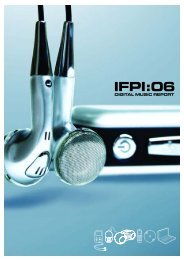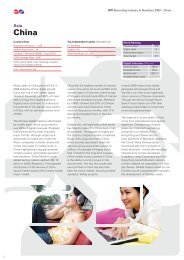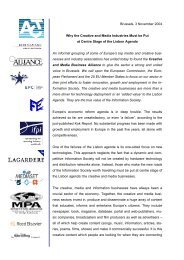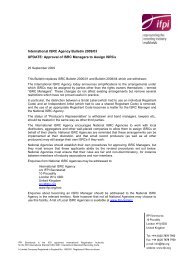SID CODE implementation guide - IFPI
SID CODE implementation guide - IFPI
SID CODE implementation guide - IFPI
You also want an ePaper? Increase the reach of your titles
YUMPU automatically turns print PDFs into web optimized ePapers that Google loves.
Who should implement the programme<br />
• Those responsible for Optical Disc custom<br />
pressing purchases.<br />
• Those responsible for Optical Disc mastering<br />
and/or manufacturing.<br />
How to implement the programme<br />
Obtaining and implementing the <strong>SID</strong> Code is<br />
simple and quick:<br />
1. Apply to Philips for your unique <strong>SID</strong> Codes. An<br />
application form can be obtained from<br />
Philips Intellectual Property & Standards,<br />
Business Support:<br />
Fax: +31 40 273 2113<br />
E-mail: info.licensing@philips.com<br />
Or downloaded from:<br />
http://www.licensing.philips.com<br />
Philips has undertaken to promptly provide all<br />
bona fide applicants for <strong>SID</strong> Codes with the<br />
appropriate codes free of any administration or<br />
other charge.<br />
2. Philips will issue the appropriate codes for<br />
your operation. Mastering Codes will be<br />
issued in a block of codes sufficient to meet<br />
the requirements of your operation. Mould<br />
Codes will consist of the letters “<strong>IFPI</strong>”<br />
followed by a four or five digit code. The last<br />
two digits of this code are allocated by you to<br />
give each mould on the site, including spare<br />
moulds, a unique code. The first two digits (in<br />
the case of a four digit <strong>SID</strong> Code) or the first<br />
three digits (in the case of a five digit <strong>SID</strong><br />
Code) are assigned to the operator of the<br />
manufacturing or mastering plant by Philips<br />
Intellectual Property & Standards.<br />
Example: A Mould <strong>SID</strong> Code of “<strong>IFPI</strong> A01xx” may<br />
be issued to you. The digits “A01” are unique to<br />
you. You will then use the last two digits to<br />
allocate a unique code for each mould. The code<br />
for the first mould might be <strong>IFPI</strong> A0100, the code<br />
for the second “<strong>IFPI</strong> A0101”, and so on. Using<br />
alphanumeric digits consisting of the numbers 0<br />
through 9 and the letters of the Western alphabet<br />
A through Z, excluding “I”, “O”, “S” and “Q”, the<br />
plant has the ability to assign unique codes to<br />
1,024 different moulds.<br />
four


